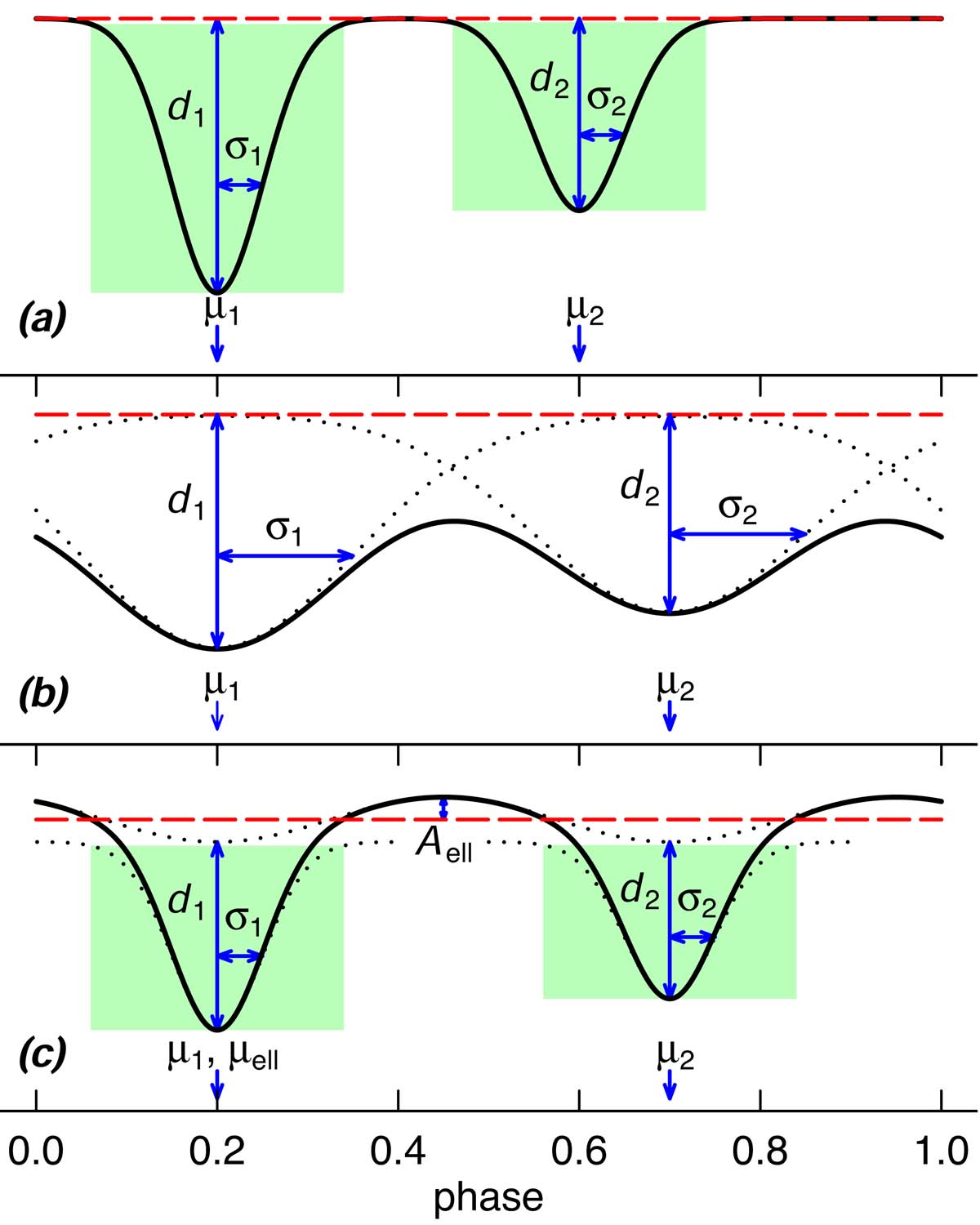Fig. 3.

Download original image
Schematic representation of the two-Gaussian model parameters used in Eq. (3) to fit folded light curves of eclipsing binaries. The ordinate represents magnitude in reverse order. Three cases are shown with their primary eclipses (arbitrarily) located at phase 0.2. Case (a) illustrates the modelling of a well-detached eccentric system using two non-overlapping Gaussians. Case (b) shows a very tight circular system modelled with two overlapping Gaussians. Case (c) represents a tight circular system with an out-of-eclipse ellipsoidal variation modelled with a cosine component. The red dashed horizontal line in each panel indicates the value of the constant C in Eq. (3). The green areas delimit the eclipse durations. The thin black dotted lines in the middle and bottom panels show the individual Gaussian and/or cosine components of the two-Gaussian models. The thick black solid lines show the resulting two-Gaussian models.
Current usage metrics show cumulative count of Article Views (full-text article views including HTML views, PDF and ePub downloads, according to the available data) and Abstracts Views on Vision4Press platform.
Data correspond to usage on the plateform after 2015. The current usage metrics is available 48-96 hours after online publication and is updated daily on week days.
Initial download of the metrics may take a while.


